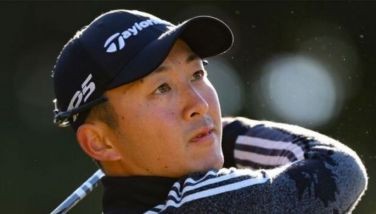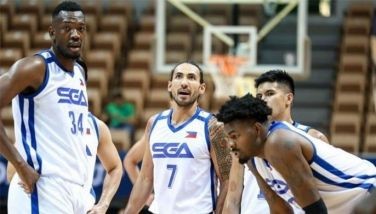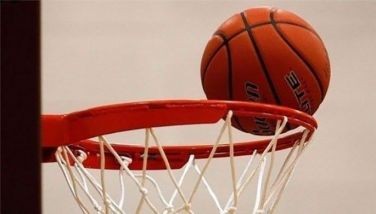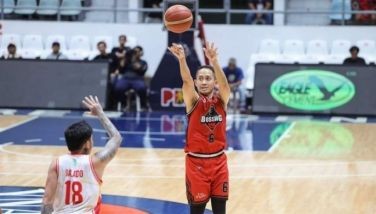Math of movement and the pick and roll
Scientists and researchers have been trying for years to explain the complexities of basketball in mathematical terms. It started with basic geometry and algebra, determining the best angles and distances to shoot with. In 2011, Brian Skinner, a graduate student in theoretical physics at the University of Minnesota, Twin Cities, provides some suggestions on when best to shoot in a basketball game. The young basketball fan was inspired by a talk at an American Physical Society meeting in 2007 on traffic. A mathematical analysis actually determined situations where closing roads could actually reduce traffic congestion by speeding up the average commute.
In 2012, Wired magazine published an article by researchers at Arizona State University. Led by life science professor and basketball fan Jennifer Fewell and math professor Dieter Armbruster, the team discovered a way to explain the results of the 2010 NBA playoffs just by keeping their eyes on the ball. Their work opens the door to an entirely new line of sports analysis. Fewell and Armbruster used a technique called network analysis and turned teammates into nodes and exchanges, passes into paths. Using this technique, they built a flowchart that showed ball movement, mapping out an entire game as it developed pass by pass.
I don’t think any of us has ever heard basketball described as spatio-temporal pattern recognition. But that is how researcher Rajiv Maheswaran and his colleagues look at the sport. Maheswaran is the CEO and co-founder of Second Spectrum, a start-up changing how we look at sports through the use of technology. Focusing on the interactive nature of movement in sport, he breaks down the game into basic movements, in the hope that the data, combined with the intuition of coaches and scouts, will result in a better ability to predict what will happen next. Maheswaran is also a research assistant professor at the University of Southern California’s (USC) computer science department and a project leader at the USC Viterbi school of engineering, where he co-directs the computational behavior group. His research is already being used by many of the top NBA teams.
One of the challenges of analyzing movement in any sport is the organic, unpredictable nature of movement, particularly in team sports. In a talk he gave in March of this year, Maheswaran tries to explain how hard it is to even identify one of basketball’s most common staples, the pick and roll. He says it is maturally dificult to put down the variables into a simple formula.
“That is also an example of a terrible algorithm,” Maheswaran begins. “So, if the player who’s the interferer – he’s called the screener – goes close by, but he doesn’t stop, it’s probably not a pick-and-roll. Or if he does stop, but he doesn’t stop close enough, it’s probably not a pick-and-roll. Or, if he does go close by and he does stop but they do it under the basket, it’s probably not a pick-and-roll. Or I could be wrong, they could all be pick-and-roll. It really depends on the exact timing, the distances, the locations, and that’s what makes it hard. So, luckily, with machine learning, we can go beyond our own ability to describe the things we know.
Initially, the challenge was to create a means of identifying the components of the pick-and-roll. But coordinated movements in basketball are rarely ever precisely executed.
“There are two offensive and two defensive players, getting ready to do the pick-and-roll dance. So the guy with ball can either take, or he can reject. His teammate can either roll or pop. The guy guarding the ball can either go over or under. His teammate can either show or play up to touch, or play soft and together they can either switch or blitz and I didn’t know most of these things when I started and it would be lovely if everybody moved according to those arrows,” he continued. “It would make our lives a lot easier, but it turns out movement is very messy. People wiggle a lot and getting these variations identified with very high accuracy, both in precision and recall, is tough because that’s what it takes to get a professional coach to believe in you. And despite all the difficulties with the right spatio-temporal features we have been able to do that.”
But that is just the first step. Unlike other algorhythmic formats which are used in post-game, Second Spectrum’s data can be used in-game, as a predictive tool. The next step is to transform information that shows the what into a way of showing the why.
“The key thing is, for NBA coaches, it’s not that they want to know whether a pick-and-roll happened or not. It’s that they want to know how it happened,” Maheswaran explains. “And why is it so important to them? It turns out in modern basketball, this pick-and-roll is perhaps the most important play. And knowing how to run it, and knowing how to defend it, is basically a key to winning and losing most games. So it turns out that this dance has a great many variations and identifying the variations is really the thing that matters, and that’s why we need this to be really, really good.”
This is a far cry from the simple math that showed that shooting percentages improve the closer you are to the basket, and at an even higher level than player efficiency ratings. What NBA coaches are buying into is the speed with which they can identify and counter movements by opposing teams, and how they can see what they themselves are doing wrong,
“Coaches trust the ability of our machine to identify these variations. We’re at the point where almost every single contender for an NBA championship this year is using our software, which is built on a machine that understands the moving dots of basketball. So not only that, we have given advice that has changed strategies that have helped teams win very important games, and it’s very exciting because you have coaches who’ve been in the league for 30 years that are willing to take advice from a machine. And it’s very exciting, it’s much more than the pick-and-roll. Our computer started out with simple things and learned more and more complex things and now it knows so many things. Frankly, I don’t understand much of what it does, and while it’s not that special to be smarter than me, we were wondering, can a machine know more than a coach? Can it know more than a person could know? And it turns out the answer is yes.”
What excites researchers in the field is that beyond sports, movement analysis can also be used in almost everything else we do, since movement is at the core of human life.
- Latest
- Trending































